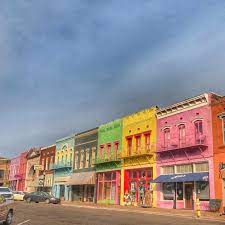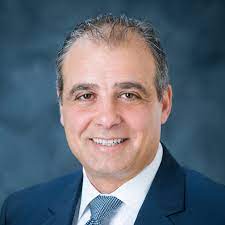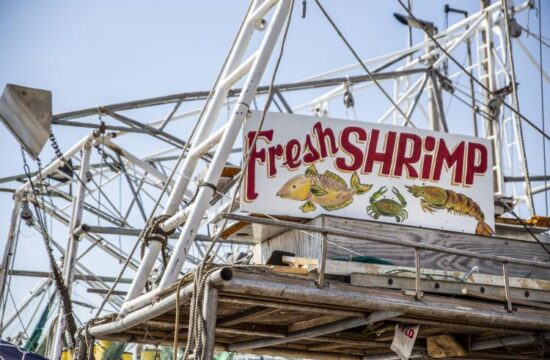This is the weekly ‘Sip of Culture. It’s a partnership between Mississippi Today Magazine and The Sip Magazine. Visit The Sip’s website to see more stories and to subscribe to the magazine. William “Bill” Ferris was the founder director of the Center for the Study of Southern Culture, University of Mississippi. He was concerned about the lack of William Faulkner’s work at the university. The author, who is internationally acclaimed for his short stories set in North Mississippi, was not represented as a lot of the work the university owned. Ferris stated that “when I arrived at Ole Miss in late 1970s, there was virtually no Faulkner.” Ferris organized a fundraising campaign to buy Faulkner’s Rowan Oak papers. Ferris also met William J. Eggleston, a famed Memphis photographer. They became fast friends. Ferris stated that he visited Eggleston’s home and was amazed by the beautiful color transfer prints. Ferris started buying the prints and accumulated a large collection over time. Ferris realized that Eggleston was to photography as Faulkner to writing and decided to donate his Eggleston print collection to the university in 1980. The University Museum at Ole Miss now has 54 Eggleston prints thanks to Ferris’ generosity. Through January 14, 2017, an exclusive exhibition featuring 36 Eggleston photos in color and black-and white will be held at the museum. Eggleston is credited with making color photography a legitimate art form. His photographs show everyday objects, giving them an extraordinary quality. Ferris, who is now a professor of History at the University of North Carolina as well as the associate director of the Center for the Study of the American South, said that William Eggleston was a “spiritual brother”. His artistic sensibility and intense focus on beauty through his photographs inspire me to create my own work. We did photo shoots in Waterford, Miss. at Faulkner’s Home, Rowan Oak.” Eggleston was born in Memphis, and raised in Sumner. He didn’t graduate from the University of Mississippi in late 1960s. The exhibit was curated by Maude Schuyler Clay. Clay is a prominent Mississippi photographer and Eggleston’s protege. She said that their mothers were “sisters”. “I live in Sumner, Miss., the house they built.” It was built by my grandparents in 1910.” Clay was influenced greatly by Eggleston’s work and life. She said that she would often visit Clay in Memphis and ended up going to the Memphis School of Art. I was his assistant, and got to ride along with him while he pointed out objects such as light and other things. I learned so much from Clay, but I also paid for it by doing darkroom research. Clay wrote the forward to the catalogue that accompany the show. She said, “It’s an interesting, mysterious bunch photos.” “Megan Abbot is a talented fiction writer. I wrote the main article, and Clay wrote an addendum.” Clay also visited Memphis multiple times to bring the prints to Eggleston to tell Clay what he remembers about each one. She said that although it was difficult work, she loved it. Clay is a freelance photographer. She has her own exhibit at the Ogden Museum, New Orleans, called “Mississippi History”. Abbot was also guest curator. She said, “It was an amazing experience to help curate this exhibit.” His photographs have evoked entire worlds for me. They are not just worlds that we see, but also worlds that we can feel, smell and touch. If you take the time to look at his photos, such as the lonely, blue parking lot that is the exhibit’s centerpiece image, you will find yourself lost in them. “You’re in another location.” Abbot stated that the pieces selected for the exhibit span over two decades and include many photographs never before exhibited. They are amazing. We have included almost all of them, except for those that were duplicates of others. Abbot stated that Eggleston is well-known as an innovator in color photography. However, these black-and white photographs are equally beautiful, haunting, beautiful, and strange. “Strange in the most amazing way. These photos transport you to Eggleston’s world. You can’t help but look at them and feel transported. William Eggleston’s photography is a major inspiration for much of her writing. Ferris wrote in his essay for the show’s catalogue, “With the grace and elegance of a ballet dancer Eggleston placed himself for every shot. He was a relentless observer of art in everyday life. He captured the meal his grandmother prepared for him, the barren Mississippi Delta fields, and a lonely dog walking along the road. He was attracted to dark rooms with incandescent neon lights at night.” Winston Eggleston is Eggleston’s son and director of Eggleston Artistic Trust. This organization is dedicated to the preservation and representation of William Eggleston’s work. “I was unable to make it to Oxford on Thursday, Oct. 6, so I went by and viewed the exhibit a few days before. It was fascinating to see the entire body of work together in one place. He said that there were some photographs I hadn’t seen before. Friday’s William Eggleston Symposium was held at the Overby Center for Southern Journalism and Politics, Ole Miss. Ferris, Clay, and Abbot were all panelists. The exhibit features photographs that have never been displayed before. Ferris calls Eggleston “the greatest living photographer.” He is like Faulkner or Picasso in what he does. The museum’s exhibit allows people to get to know his work. It is part of Ole Miss’ legacy. The University Museum is located at Fifth Street and University Avenue. Hours are 10 a.m. to 6 pm Tuesday through Saturday. For information, visit http://museum.olemiss.edu/ or follow the museum on Twitter and Instagram at @ummuseum and on Facebook.










